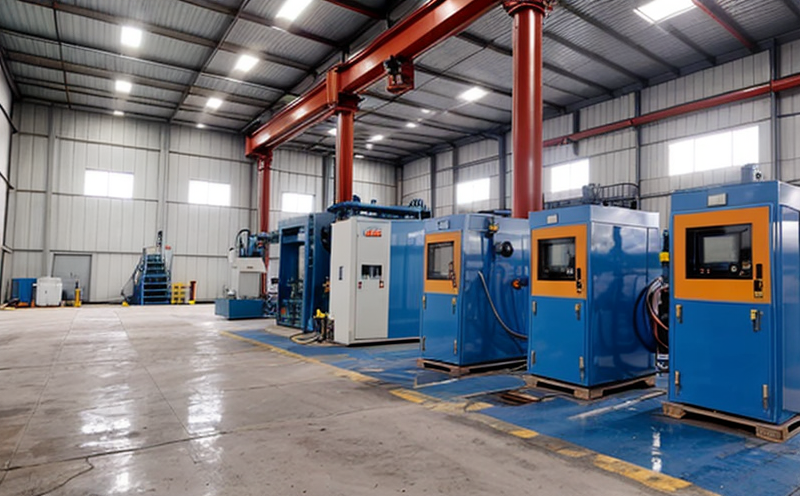ISO 8213 Chemical Analysis of Quartz Powder Testing
The ISO 8213 chemical analysis standard is a cornerstone for the accurate and reliable determination of the chemical composition of quartz powder. This method is crucial in various sectors, including mining, ceramics, glass manufacturing, electronics, and pharmaceuticals. The primary objective of this service is to provide precise quantitative data on the elemental makeup of quartz samples, ensuring that industries can meet stringent quality standards.
Quartz powder is a widely used industrial mineral with diverse applications. From its role in electronic components due to its piezoelectric properties to its use in ceramics for thermal insulation and structural integrity, quartz powder plays an indispensable part in many processes. The ISO 8213 standard ensures that the quality of these powders meets specific requirements by analyzing key elements such as silicon (Si), oxygen (O), aluminium (Al), and trace impurities like iron (Fe) and titanium (Ti).
Our laboratory adheres strictly to the ISO 8213 protocol, which involves several critical steps. Sample preparation is paramount; the quartz powder must be thoroughly dried, ground to a fine consistency, and homogenized before analysis. This ensures that any variations in sample composition are minimized, leading to more accurate results.
The analytical process typically utilizes advanced techniques such as Inductively Coupled Plasma-Optical Emission Spectrometry (ICPOES) or X-ray Fluorescence (XRF). These methods provide high precision and low detection limits, making them ideal for detecting even trace elements. The results from these analyses are then compared against the reference values specified in ISO 8213 to ensure compliance with industry standards.
Understanding the chemical composition of quartz powder is essential for several reasons. For instance, in the electronics sector, knowing the exact silicon content ensures that components meet specific performance criteria. In ceramics manufacturing, understanding trace element levels helps prevent defects and improves product longevity. Compliance with ISO 8213 not only enhances product quality but also streamlines supply chain management by providing consistent data across different batches or suppliers.
The importance of this service extends beyond just meeting regulatory requirements; it supports innovation within industries reliant on quartz powder. By accurately characterizing the chemical composition, researchers and engineers can optimize processes, develop new products, and enhance existing ones. This ensures that industries remain competitive in a global market where quality is paramount.
- Customer Impact: Ensures consistent product quality, supports innovation, and enhances supply chain efficiency.
In conclusion, ISO 8213 chemical analysis of quartz powder testing is vital for maintaining high standards across multiple industries. Our laboratory's commitment to adhering strictly to this standard ensures that clients receive accurate and reliable data on their quartz samples. This service not only supports compliance with international regulations but also drives technological advancement and quality improvements within industrial sectors.
Industry Applications
The ISO 8213 chemical analysis of quartz powder testing has numerous applications across different industries. In the mining sector, it helps in assessing raw materials before processing to ensure optimal utilization and quality output. For ceramics manufacturers, this service is essential for controlling the formulation of ceramic products, ensuring they meet specific physical properties required by end-users.
In glass manufacturing, understanding the chemical composition of quartz powder aids in optimizing melting processes and improving product quality. The electronics industry benefits from accurate analysis to ensure that silicon content meets stringent performance standards. In pharmaceuticals, this service supports the development of safe and effective products using quartz-based materials.
By providing precise data on elemental makeup, ISO 8213 chemical analysis ensures that all these industries can adhere to international quality standards. This not only enhances product reliability but also fosters trust among consumers who rely on these industrial minerals for their daily needs.
Quality and Reliability Assurance
The ISO 8213 chemical analysis of quartz powder testing plays a pivotal role in quality and reliability assurance across various industries. By adhering to this standard, manufacturers can ensure that their products consistently meet the required specifications set forth by international regulations.
In mining operations, accurate analysis helps in selecting appropriate raw materials for processing, which ultimately leads to better product quality. For ceramic manufacturers, compliance with ISO 8213 ensures consistent product performance and durability. In glass manufacturing, precise elemental data allows for optimized production processes, leading to higher quality products.
The electronics industry relies on this service to ensure that silicon content in quartz powder meets strict performance criteria. Pharmaceutical companies use it to develop safe and effective products using quartz-based materials. By providing reliable and consistent results, ISO 8213 chemical analysis strengthens supply chains by ensuring all parties involved adhere to the same high standards.
This commitment to quality extends beyond just meeting regulatory requirements; it supports innovation within industries reliant on quartz powder. Accurate characterization of the chemical composition enables researchers and engineers to optimize processes, develop new products, and enhance existing ones. This ensures that industries remain competitive in a global market where quality is paramount.





